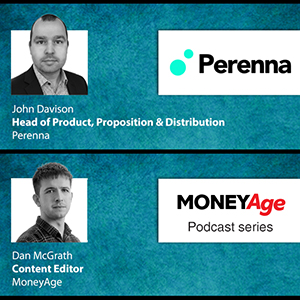Inflation surged by 5.1% in the 12 months to November to reach its highest rate since 2011, new figures published by the Office for National Statistics (ONS) have revealed.
The latest monthly Consumer Prices Index (CPI) inflation figure published by the ONS reflected a rise from 4.2% in October.
On a monthly basis, CPI inflation increased by 0.7% in November, which compares to a fall of 0.1% in November 2020.
At 5.1%, the ONS confirmed this is the highest CPI 12-month inflation rate since September 2011, when it stood at 5.2%.
Commenting on the data, Canada Life technical director, Andrew Tully, said that the latest inflation figures give “little hope for any financial festive cheer”.
“We are all feeling the pinch and the reality is the average UK household will need to find over a thousand pounds extra next year to maintain current living standards,” Tully highlighted. “We can feel this in our back pockets as everything is costing us more as we battle to balance our household budgets. With inflation headwinds growing stronger, living standards will continue to fall.
“The rising costs of living can disproportionately affect people with fixed incomes, including retirees who typically live off pension income. Building some form of protection against the ravages of inflation is important if people want to maintain their standard of living.”
The ONS also publishes a Consumer Prices Index including owner occupiers’ housing costs (CPIH), which rose by 4.6% in the 12 months to November, a level up from 3.8% in the 12 months to October. The largest upward contributions to November CPIH 12-month inflation rate came from transport (1.34 percentage points) and housing and household services (1.28 percentage points).
On a monthly basis, CPIH increased by 0.6% in November, which also compared with a fall in November 2020 of 0.1%.
Given that the owner occupiers’ housing costs (OOH) component accounts for around 19% of the CPIH, the ONS states it is the main driver for differences between the CPIH and CPI inflation rates.
Hargreaves Lansdown senior investment and markets analyst, Susannah Streeter, added: “Faced with such a high inflation reading, and with forecasts that the only way is up, the Bank of England would ordinarily be expected to call time on the cheap money party and raise interest rates.
“But with the recovery far from being in full swing and the omicron variant an unruly guest, set to knock back confidence further for many sectors, policymakers may be hot and bothered but are likely to stay in wait-and-see mode tomorrow. With a possible Plan C on the cards, and closures of hospitality and retail being considered if hospital admissions soar, as well as a severe income squeeze taking hold, consumer sentiment and spending could take a fresh hit.
“What is pretty certain is that even if ultra-low rates stay put right now, with prices running so hot, there won’t be an extended lock-in with expectations that February is likely to see rates lift.”
Latest News
-
Borrowers jumped gun ahead of December rate cut – Twenty7tec
-
FCA stops Verus Financial Services from conducting regulated activities
-
IHT receipts reach £5.8bn in eight months to November
-
Perspective Financial Group acquires Prosser Knowles
-
Over half of UK savers relying on non-pension assets for retirement
-
Bank of England cuts interest rates to 3.75%
Perenna and the long-term fixed mortgage market

Content editor, Dan McGrath, spoke to head of product, proposition and distribution at Perenna, John Davison, to explore the long-term fixed mortgage market, the role that Perenna plays in this sector and the impact of the recent Autumn Budget
The role of the bridging market and technology usage in the industry
Content editor, Dan McGrath, sat down with chief operating officer at Black & White Bridging, Damien Druce, and head of development finance at Empire Global Finance, Pete Williams, to explore the role of the bridging sector, the role of AI across the industry and how the property market has fared in the Labour Government’s first year in office.
NEW BUILD IN FOCUS - NEW EPISODE OF THE MORTGAGE INSIDER PODCAST, OUT NOW

Figures from the National House-Building Council saw Q1 2025 register a 36% increase in new homes built across the UK compared with the same period last year, representing a striking development for the first-time buyer market. But with the higher cost of building, ongoing planning challenges and new and changing regulations, how sustainable is this growth? And what does it mean for brokers?
Does the North-South divide still exist in the UK housing market?

What do the most expensive parts of the country reveal about shifting demand? And why is the Manchester housing market now outperforming many southern counterparts?
In this episode of the Barclays Mortgage Insider Podcast, host Phil Spencer is joined by Lucian Cook, Head of Research at Savills, and Ross Jones, founder of Home Financial and Evolve Commercial Finance, to explore how regional trends are redefining the UK housing, mortgage and buy-to-let markets.
In this episode of the Barclays Mortgage Insider Podcast, host Phil Spencer is joined by Lucian Cook, Head of Research at Savills, and Ross Jones, founder of Home Financial and Evolve Commercial Finance, to explore how regional trends are redefining the UK housing, mortgage and buy-to-let markets.
© 2019 Perspective Publishing Privacy & Cookies










Recent Stories